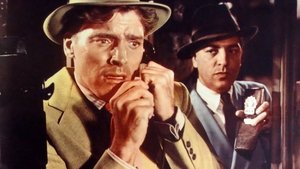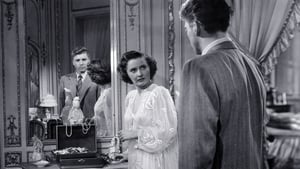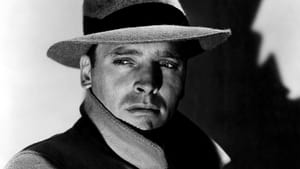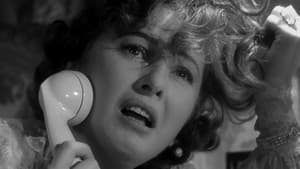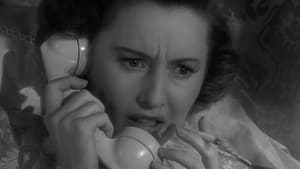Contact: info@alwanfilm.com
Video Sources 0 Views
- Watch trailer
- Sorry Wrong Number

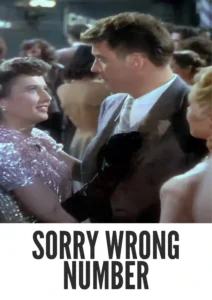
Synopsis
Table of Contents
ToggleReview: Sorry Wrong Number 1948 Colorized – A Suspenseful Noir Thriller

Introduction
Sorry, Wrong Number, released in 1948, is a classic noir thriller that keeps audiences on the edge of their seats from start to finish. Directed by Anatole Litvak and based on the popular radio play by Lucille Fletcher, this gripping film captivates viewers with its tense atmosphere, compelling narrative, and powerhouse performances. In this review, we’ll delve into the riveting world of Sorry, Wrong Number and explore its enduring legacy in the realm of suspense cinema.
Check The Full Colorized Movies List
Check Our Colorized Movies Trailer Channel
Understanding Sorry Wrong Number 1948 Colorized: Director, Cast, and Genre
Directed by Anatole Litvak, Sorry, Wrong Number boasts a stellar cast led by Barbara Stanwyck in a tour de force performance as the bedridden protagonist, Leona Stevenson. The film belongs to the suspense thriller genre, known for its intricate plots, unexpected twists, and heart-pounding tension.
Exploring the World of Sorry Wrong Number 1948 Colorized: Plot and Characters
Sorry, Wrong Number tells the story of Leona Stevenson, a wealthy and neurotic woman confined to her bed due to illness. One night, while trying to reach her husband, Leona accidentally overhears a phone conversation that reveals a sinister plot to commit murder. As she frantically tries to piece together the clues, Leona finds herself caught in a web of deception and danger, leading to a thrilling climax filled with twists and turns.
The Art of Film Colorization
While Sorry, Wrong Number was originally filmed in black and white, its early colorized version adds a new layer of intensity to its suspenseful atmosphere. The colorization process heightens the film’s dramatic tension and enhances the emotional impact of its gripping storyline.
Early Colored Films: A Brief History
The history of early colored films is characterized by innovation and experimentation as filmmakers sought to push the boundaries of visual storytelling. From hand-painted frames to advanced technicolor processes, the evolution of colorization techniques revolutionized the cinematic landscape, offering audiences a new way to experience their favorite films.
Sorry, Wrong Number (1948) and Its Early Colored Version
The decision to release Sorry, Wrong Number in a colorized format was made with the intention of immersing audiences in the suspenseful world of the film and enhancing its visual impact. While purists may prefer the original black and white version, the early colorized edition of Sorry, Wrong Number adds depth and vibrancy to its atmospheric cinematography, elevating the viewer’s experience to new heights.
The Debate Over Film Colorization
The debate over film colorization continues to spark discussion among cinephiles and industry professionals alike. While some argue that colorization breathes new life into classic films and makes them more accessible to modern audiences, others maintain that it compromises the artistic integrity of the original work. As technology advances and filmmaking techniques evolve, the debate over colorization remains a hot topic within the film community.
Examining Sorry, Wrong Number (1948) as an Early Colored Film
Viewing Sorry, Wrong Number in its early colorized iteration offers audiences a fresh perspective on its suspenseful storyline and dynamic characters. The colorization process enhances the film’s dramatic tension and amplifies the emotional impact of its twists and turns. As viewers are drawn into Leona’s desperate race against time, they are treated to a visual feast that heightens the suspense and excitement of the narrative.
Influence and Legacy: Sorry Wrong Number 1948 Colorized’s Impact on Cinema
Sorry, Wrong Number is hailed as a landmark film in the suspense thriller genre that continues to captivate audiences with its gripping storyline and powerhouse performances. Its innovative use of sound and suspenseful storytelling techniques have left an indelible mark on cinema, inspiring countless filmmakers to explore the boundaries of suspense and intrigue.
Director’s Cinematic Legacy: Beyond Sorry Wrong Number 1948 Colorized
Anatole Litvak’s directorial legacy extends far beyond Sorry, Wrong Number, encompassing a diverse body of work that includes acclaimed films such as The Snake Pit and Anastasia. As one of the most versatile filmmakers of his generation, Litvak was known for his ability to craft compelling narratives that resonated with audiences on a deep and emotional level. Sorry, Wrong Number stands as a testament to his talent and vision, solidifying his reputation as a master of suspense cinema.
Themes Explored inSorry Wrong Number 1948 Colorized
At its core, Sorry, Wrong Number explores themes of paranoia, deception, and the fragility of human existence. Through its tense atmosphere and morally ambiguous characters, the film offers a chilling portrayal of the consequences of greed and betrayal, challenging viewers to confront their own fears and insecurities as they navigate the twists and turns of the narrative.
Reception and Controversy Surrounding Sorry Wrong Number 1948 Colorized
Upon its release, Sorry, Wrong Number received widespread critical acclaim for its gripping storyline, tense atmosphere, and powerhouse performances. While the decision to release the film in a colorized format sparked debate among purists, its enduring popularity has cemented its status as a timeless classic of the suspense thriller genre.
Where to Watch Sorry Wrong Number 1948 Colorized Online
For those eager to experience Sorry, Wrong Number for themselves, the film is readily available on popular streaming platforms such as Amazon Prime Video, Google Play Movies, and iTunes. Whether viewed in its original black and white format or its early colorized iteration, Sorry, Wrong Number offers a cinematic experience that is both suspenseful and visually stunning.
FAQs About Sorry Wrong Number 1948 Colorized
1. Is Sorry, Wrong Number based on a true story?
No, Sorry, Wrong Number is a fictional film based on the popular radio play by Lucille Fletcher. While the film’s storyline may draw inspiration from real-life events, its characters and plot are works of fiction.
2. Who starred in Sorry, Wrong Number?
Sorry, Wrong Number stars Barbara Stanwyck in the lead role of Leona Stevenson, a wealthy and neurotic woman confined to her bed due to illness. She is supported by a talented ensemble cast, including Burt Lancaster, Ann Richards, and Wendell Corey.
3. What is the central message of Sorry, Wrong Number?
At its core, Sorry, Wrong Number explores the consequences of paranoia and obsession in the face of danger. Through its tense atmosphere and morally complex characters, the film offers a chilling portrayal of the human psyche, challenging viewers to confront their own fears and insecurities as they navigate the twists and turns of the narrative.
4. Why was Sorry, Wrong Number released in a colorized format?
The decision to release Sorry, Wrong Number in a colorized format was made with the intention of immersing audiences in the suspenseful world of the film and enhancing its visual impact. While purists may prefer the original black and white version, the early colorized edition of Sorry, Wrong Number adds depth and vibrancy to its atmospheric cinematography, elevating the viewer’s experience to new heights.
5. What is the legacy of Sorry, Wrong Number?
Sorry, Wrong Number is hailed as a landmark film in the suspense thriller genre that continues to captivate audiences with its gripping storyline and powerhouse performances. Its innovative use of sound and suspenseful storytelling techniques have left an indelible mark on cinema, inspiring countless filmmakers to explore the boundaries of suspense and intrigue.
6. Are there any sequels or remakes of Sorry, Wrong Number?
No, there have been no official sequels or remakes of Sorry, Wrong Number. However, the film’s enduring popularity has inspired countless reinterpretations and homages in various media. Nonetheless, none have captured the suspenseful atmosphere and emotional depth of the original 1948 classic.
7. Where can I watch Sorry, Wrong Number online?
For those eager to experience Sorry, Wrong Number for themselves, the film is readily available on popular streaming platforms such as Amazon Prime Video, Google Play Movies, and iTunes. Whether viewed in its original black and white format or its early colorized iteration, Sorry, Wrong Number offers a cinematic experience that is both suspenseful and visually stunning.
Conclusion
In conclusion, Sorry, Wrong Number (1948) stands as a timeless classic of the suspense thriller genre that continues to enthrall audiences with its gripping storyline, tense atmosphere, and powerhouse performances. Whether viewed in its original black and white format or its early colorized iteration, Anatole Litvak’s insightful direction and Barbara Stanwyck’s riveting performance offer a cinematic experience that is both suspenseful and visually stunning. As viewers are drawn into the paranoid world of Leona Stevenson, they are treated to a thrilling journey that challenges their perceptions of reality and leaves them on the edge of their seats until the very end. Sorry, Wrong Number remains a gripping and unforgettable cinematic masterpiece that continues to captivate audiences around the world.
